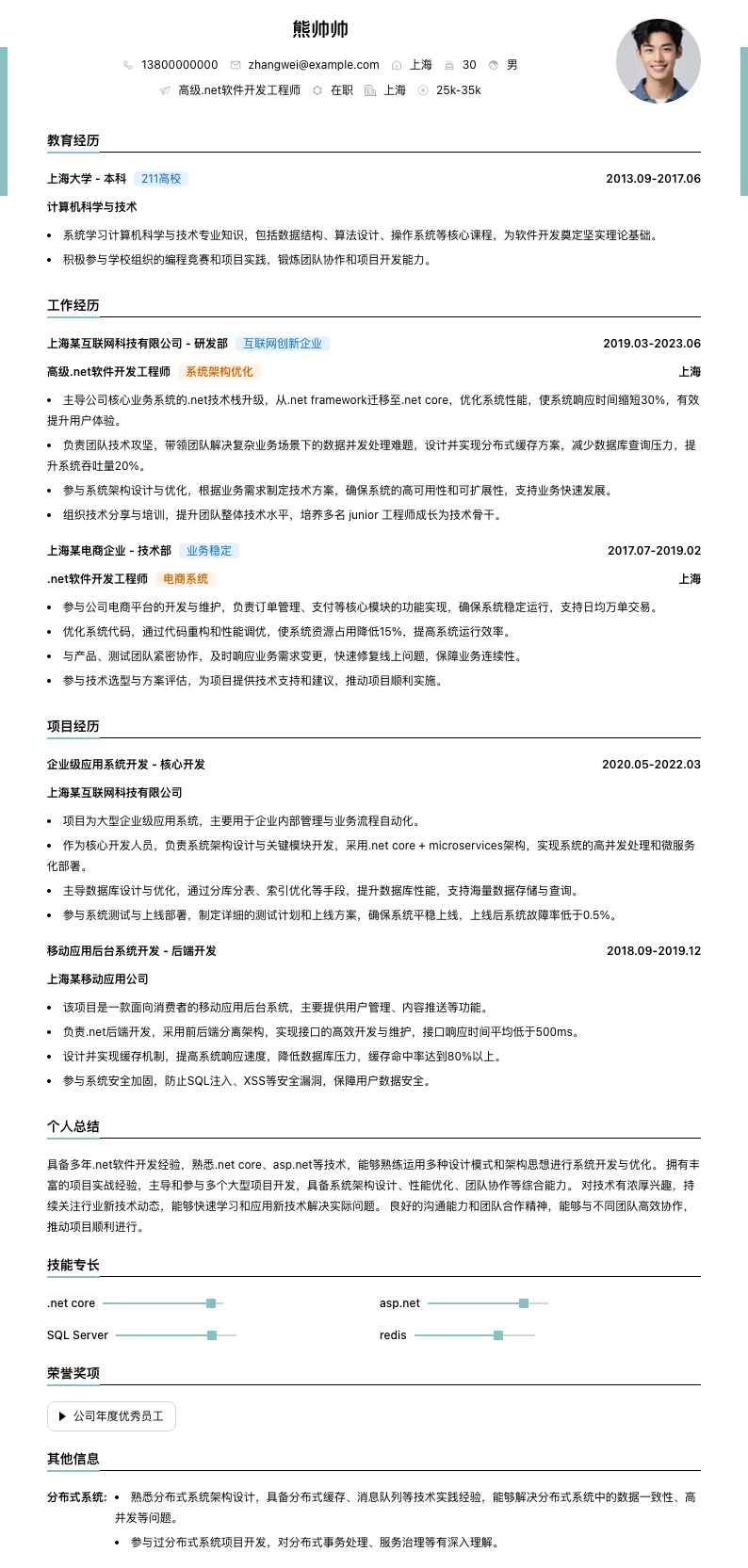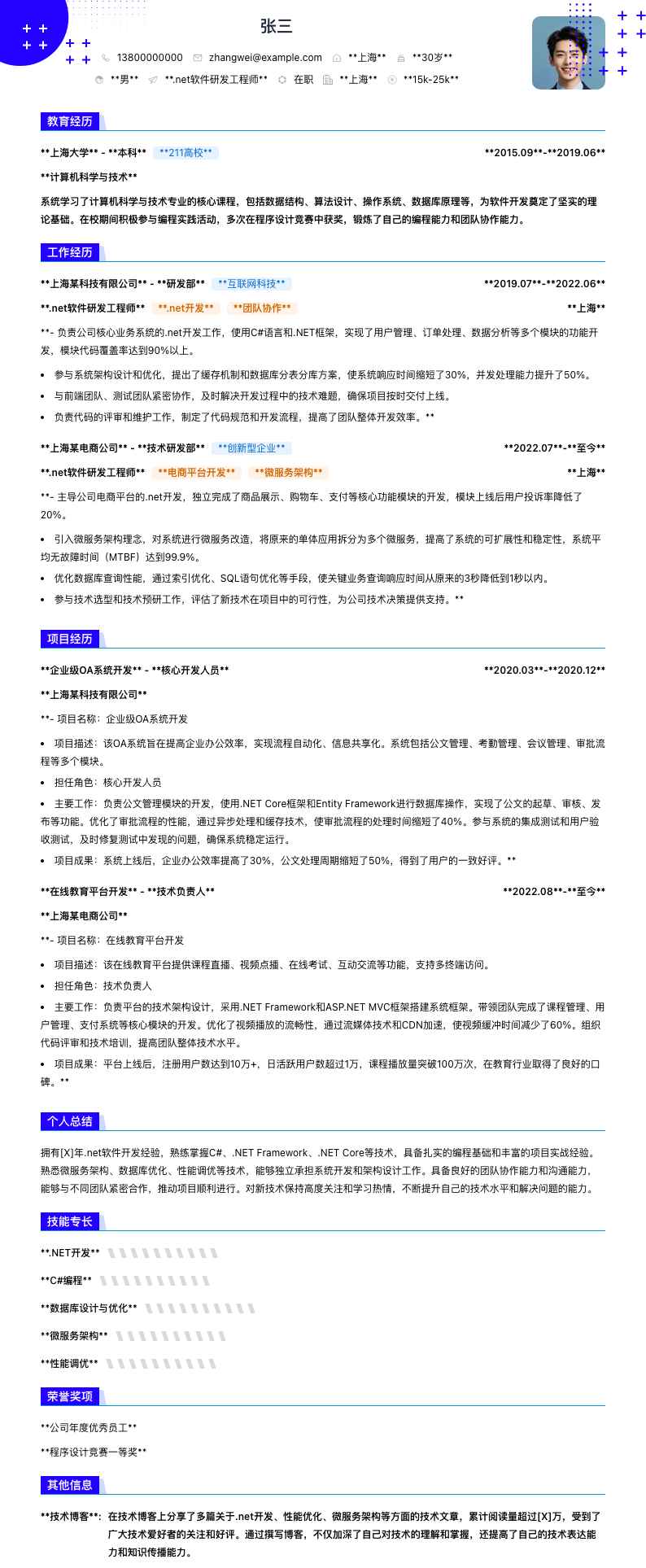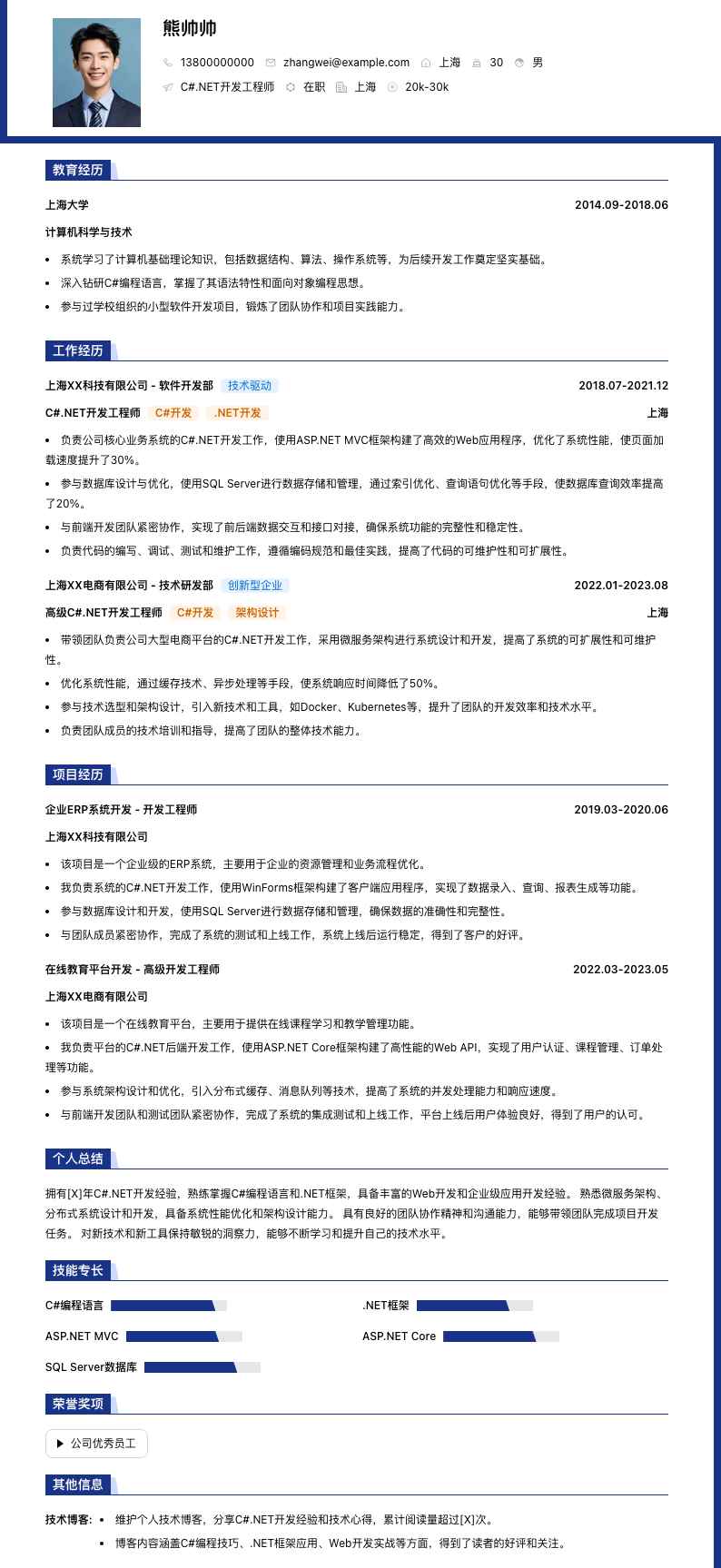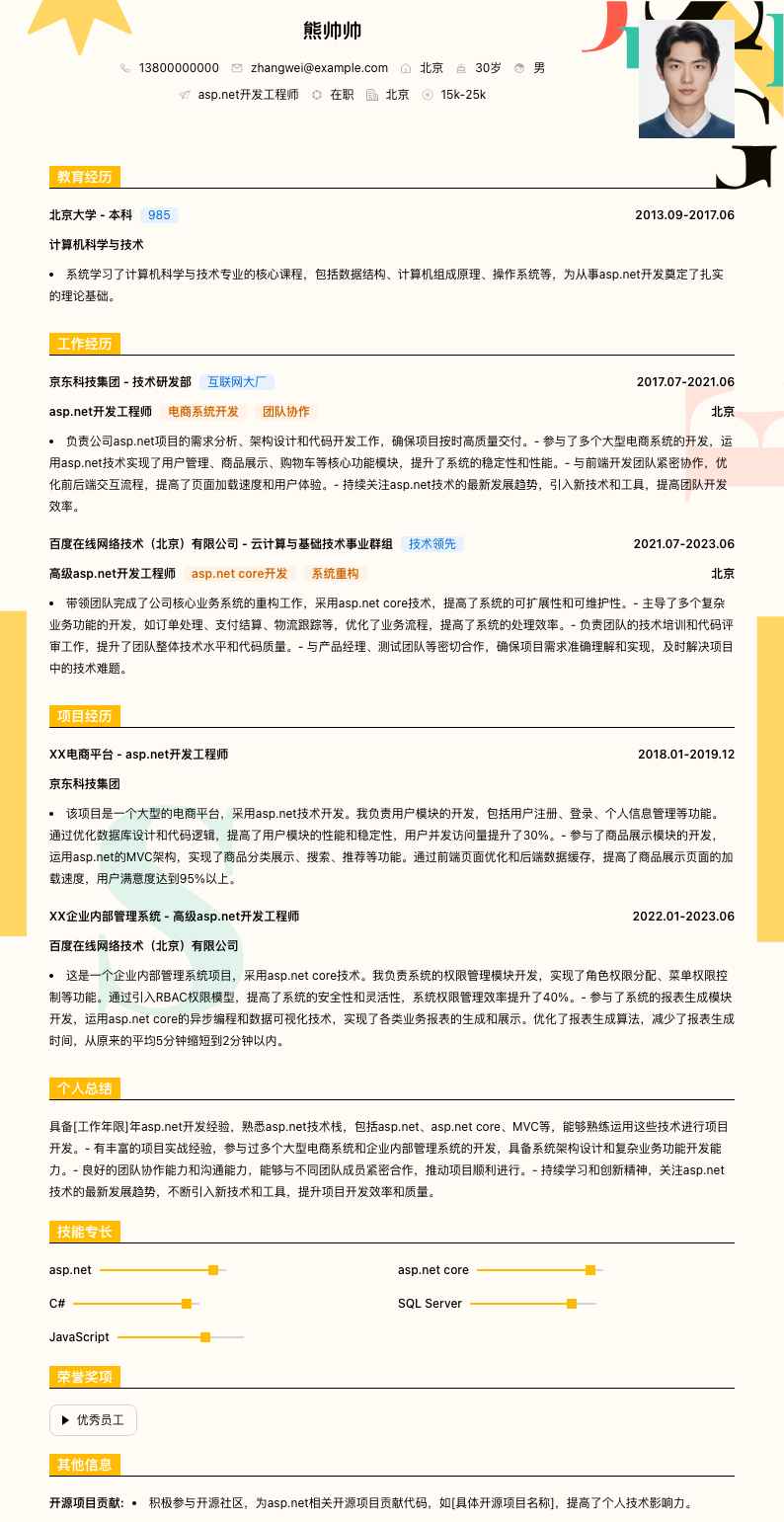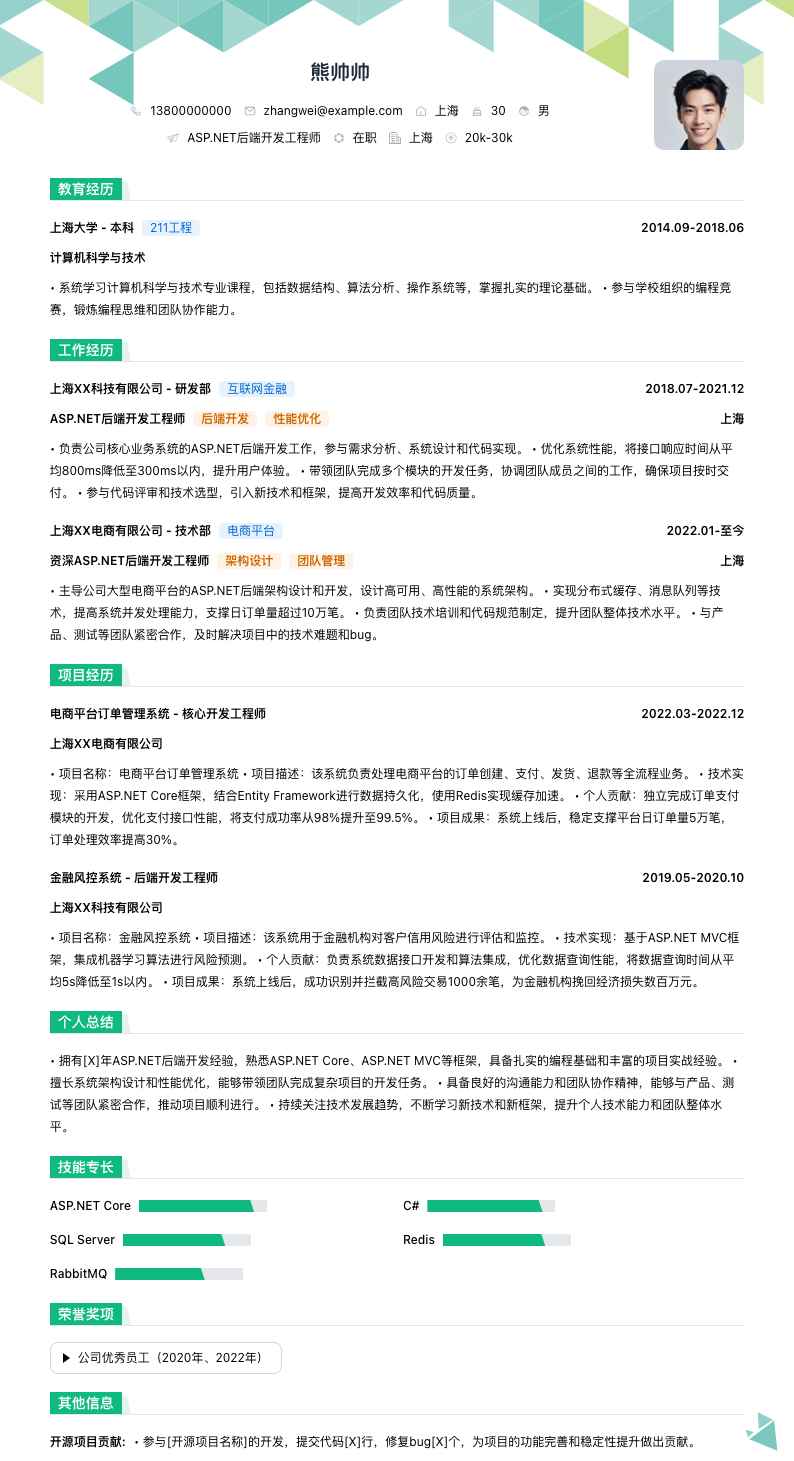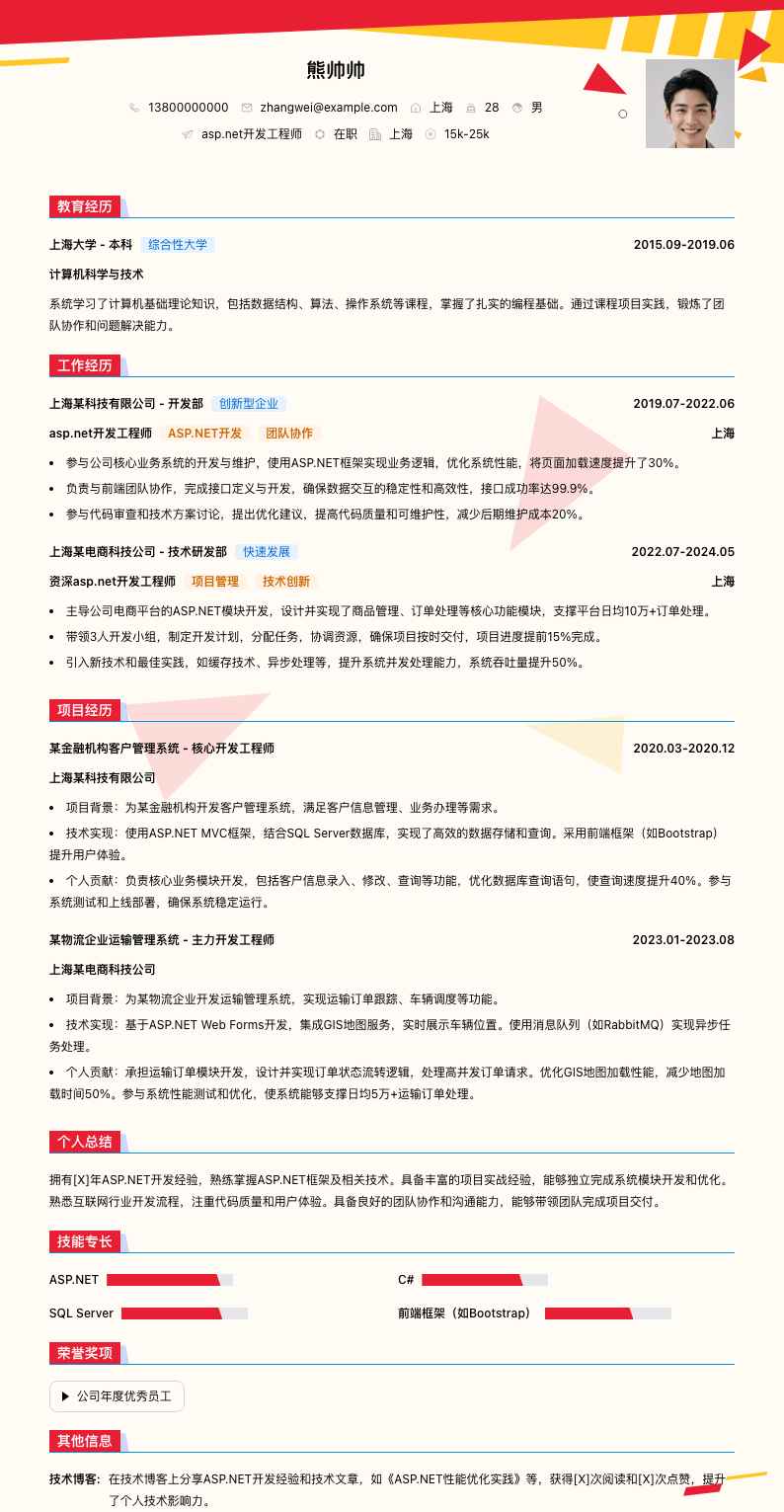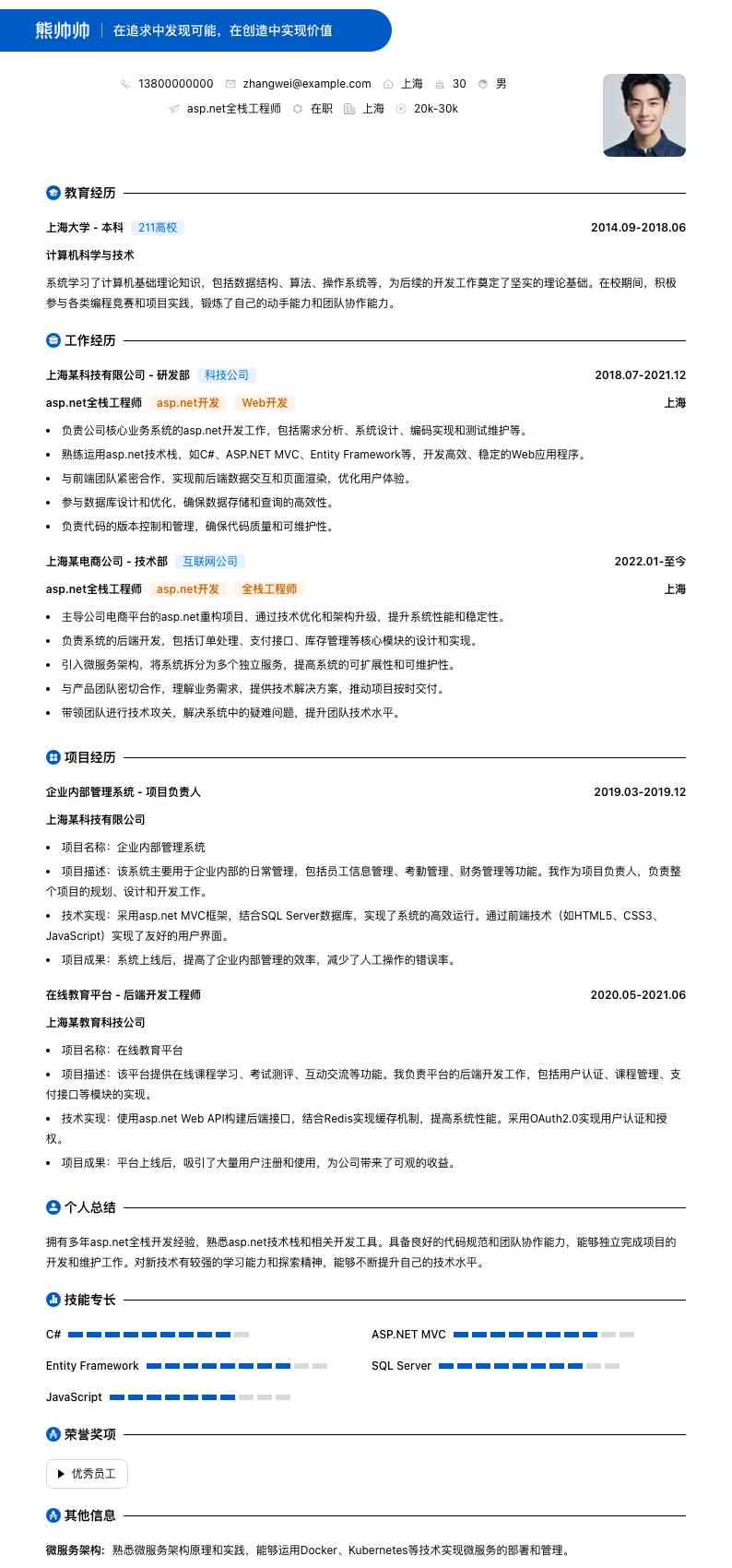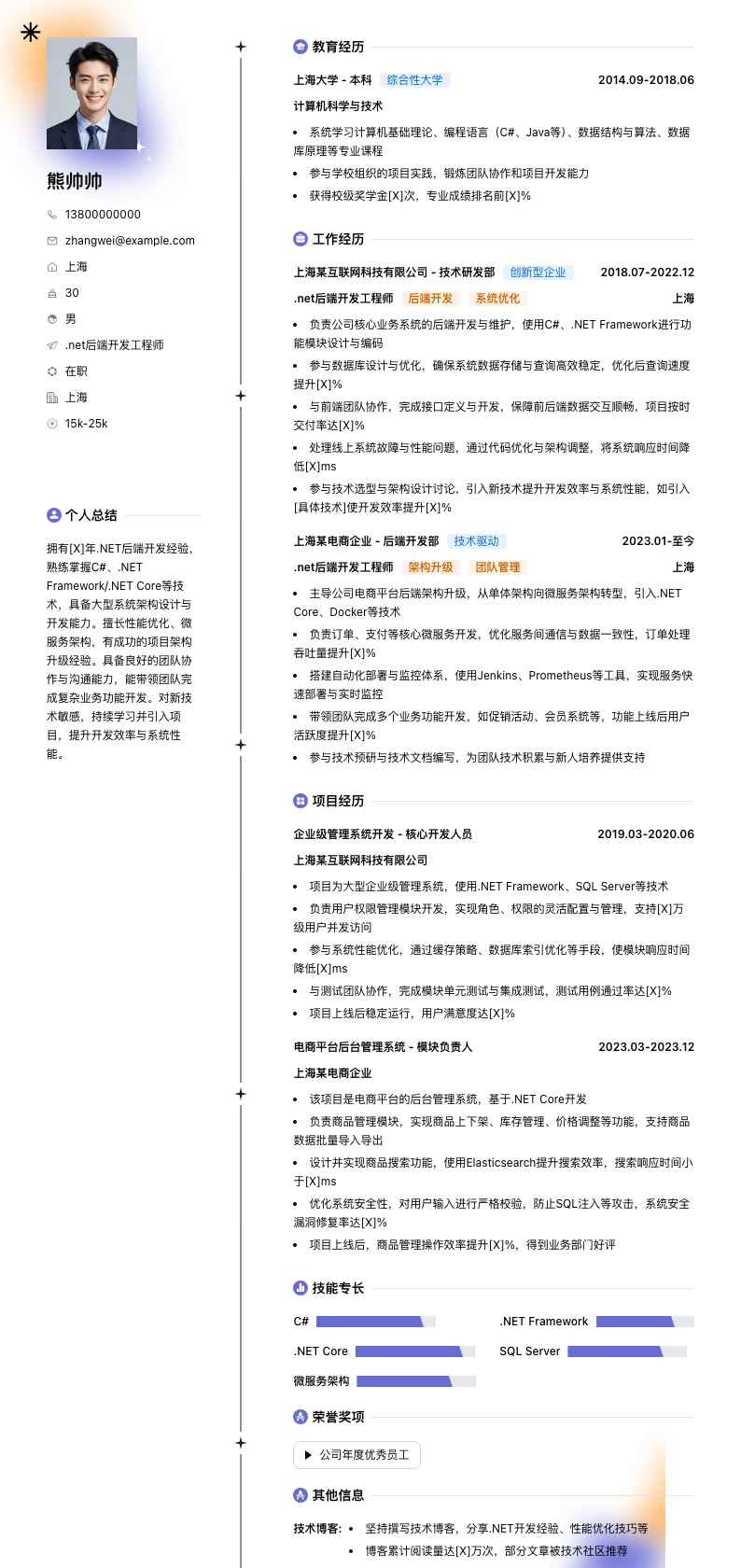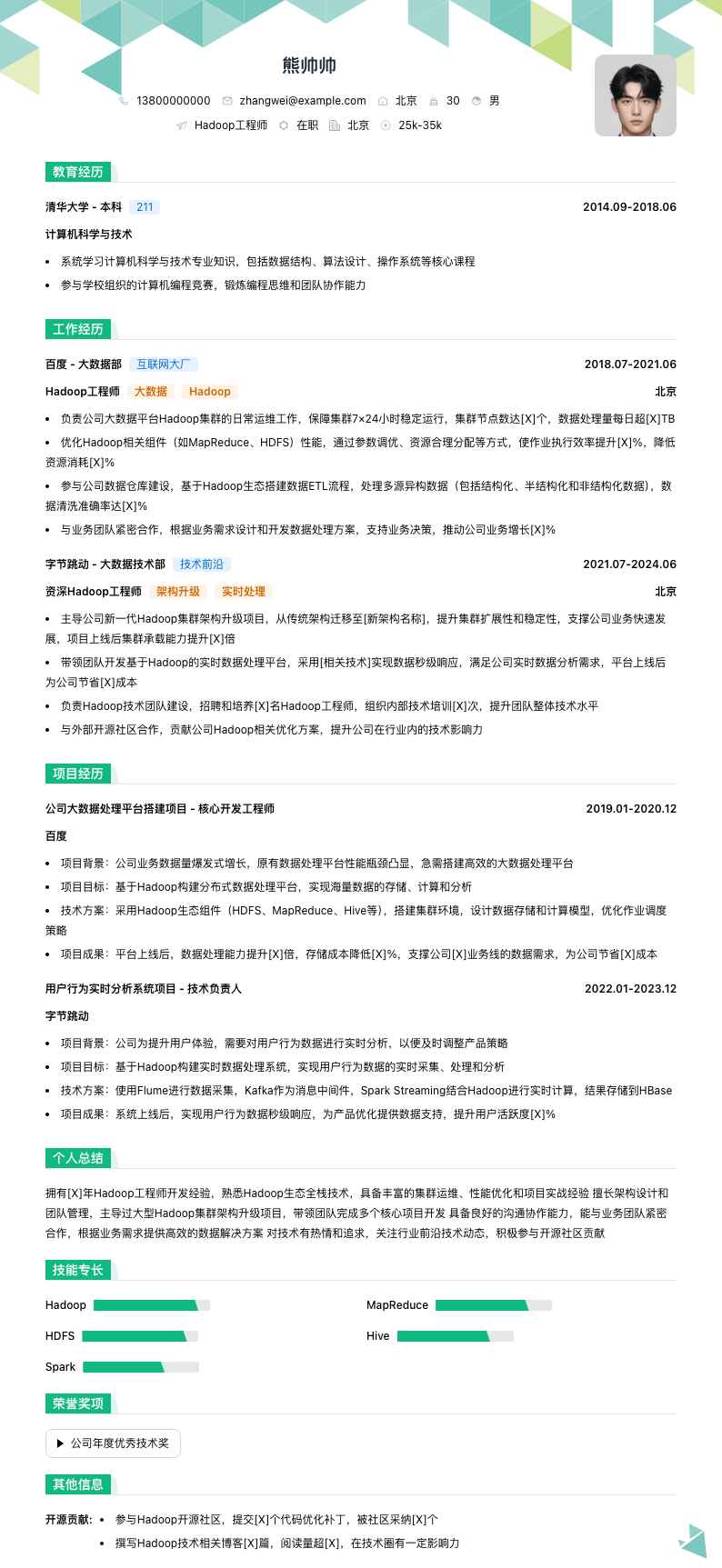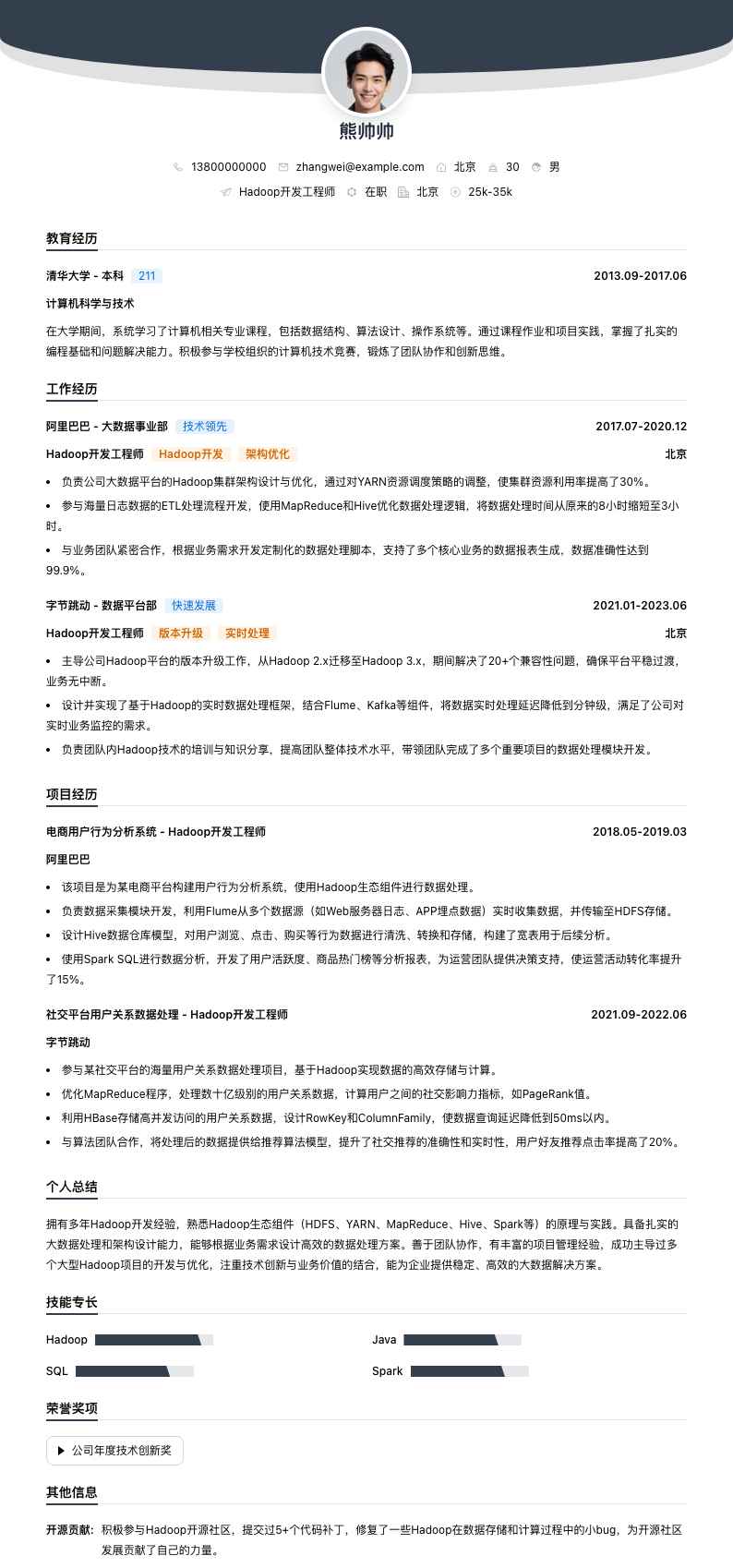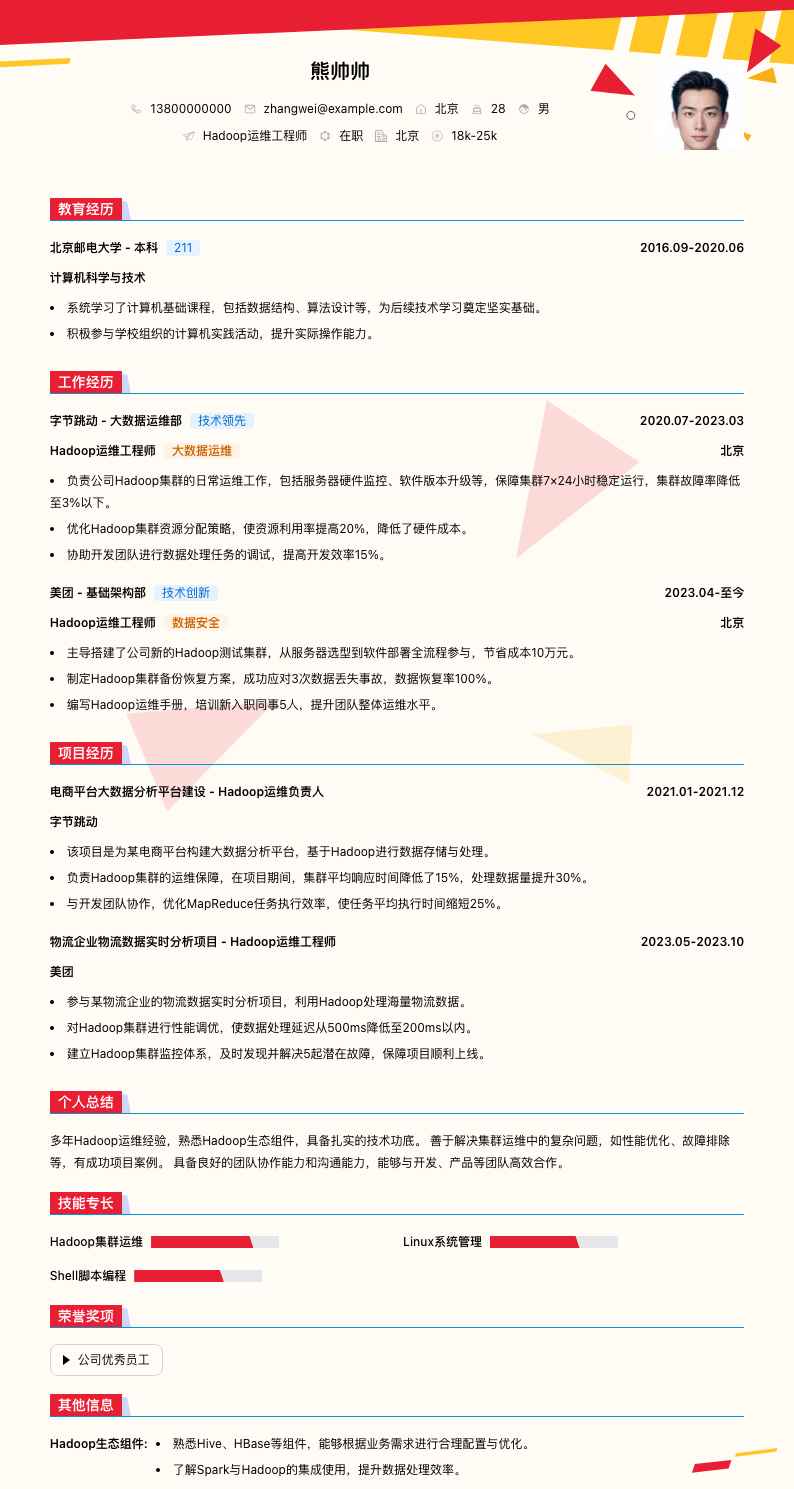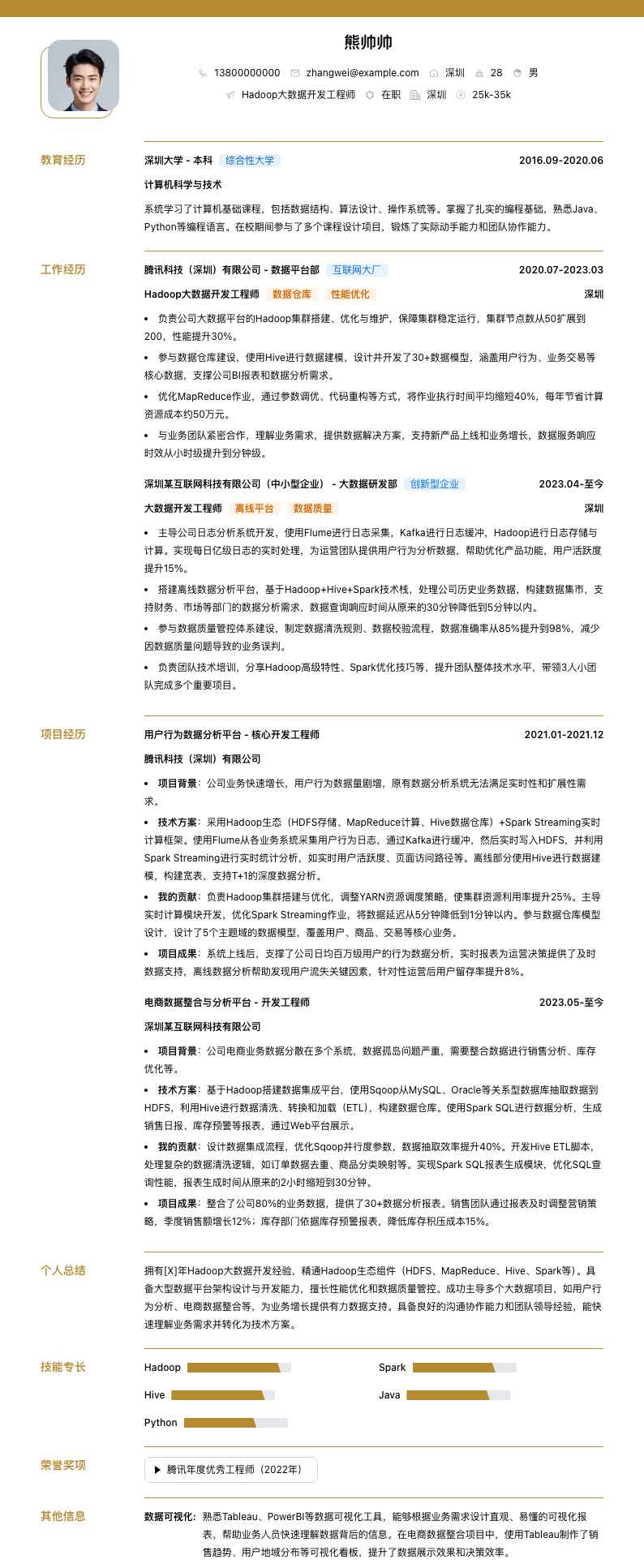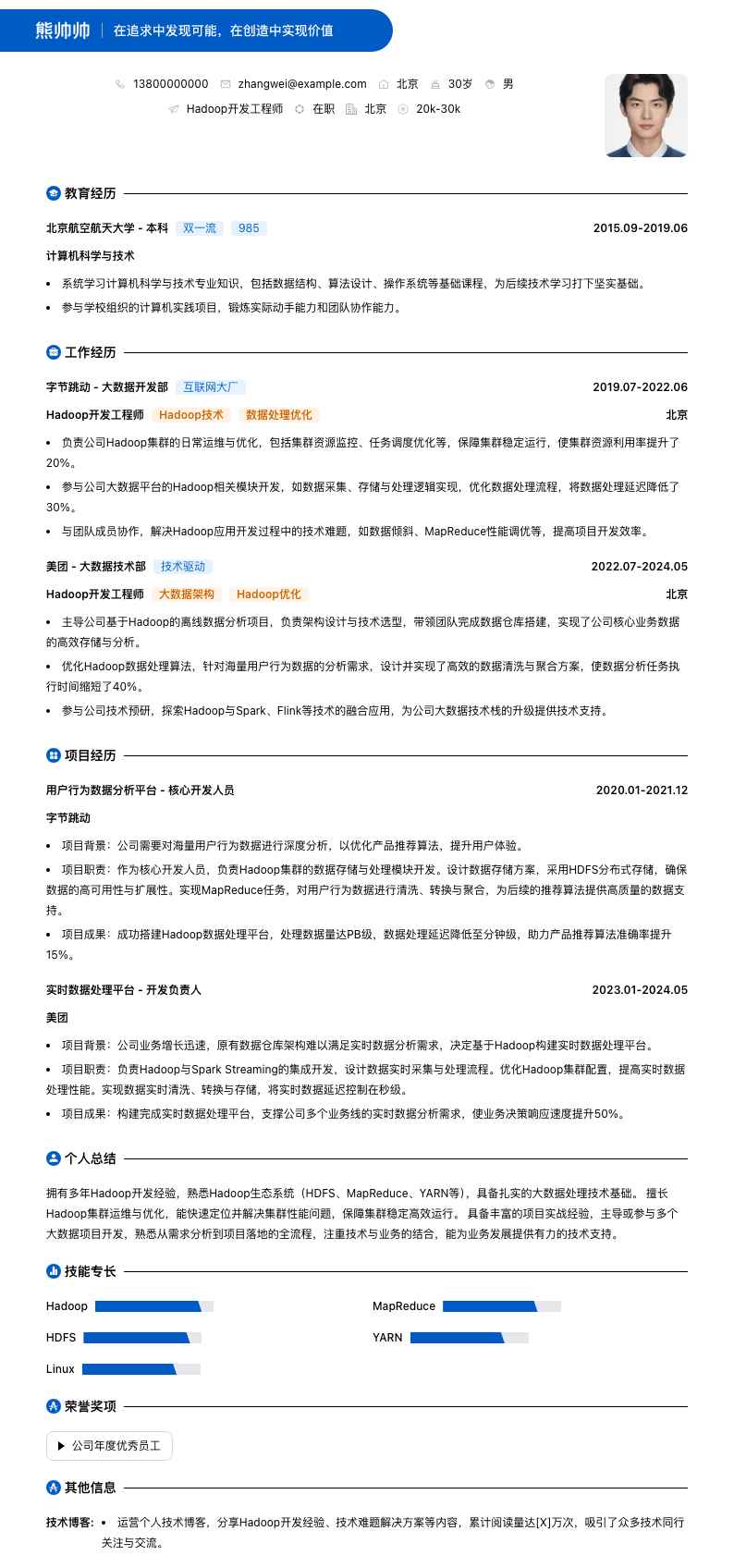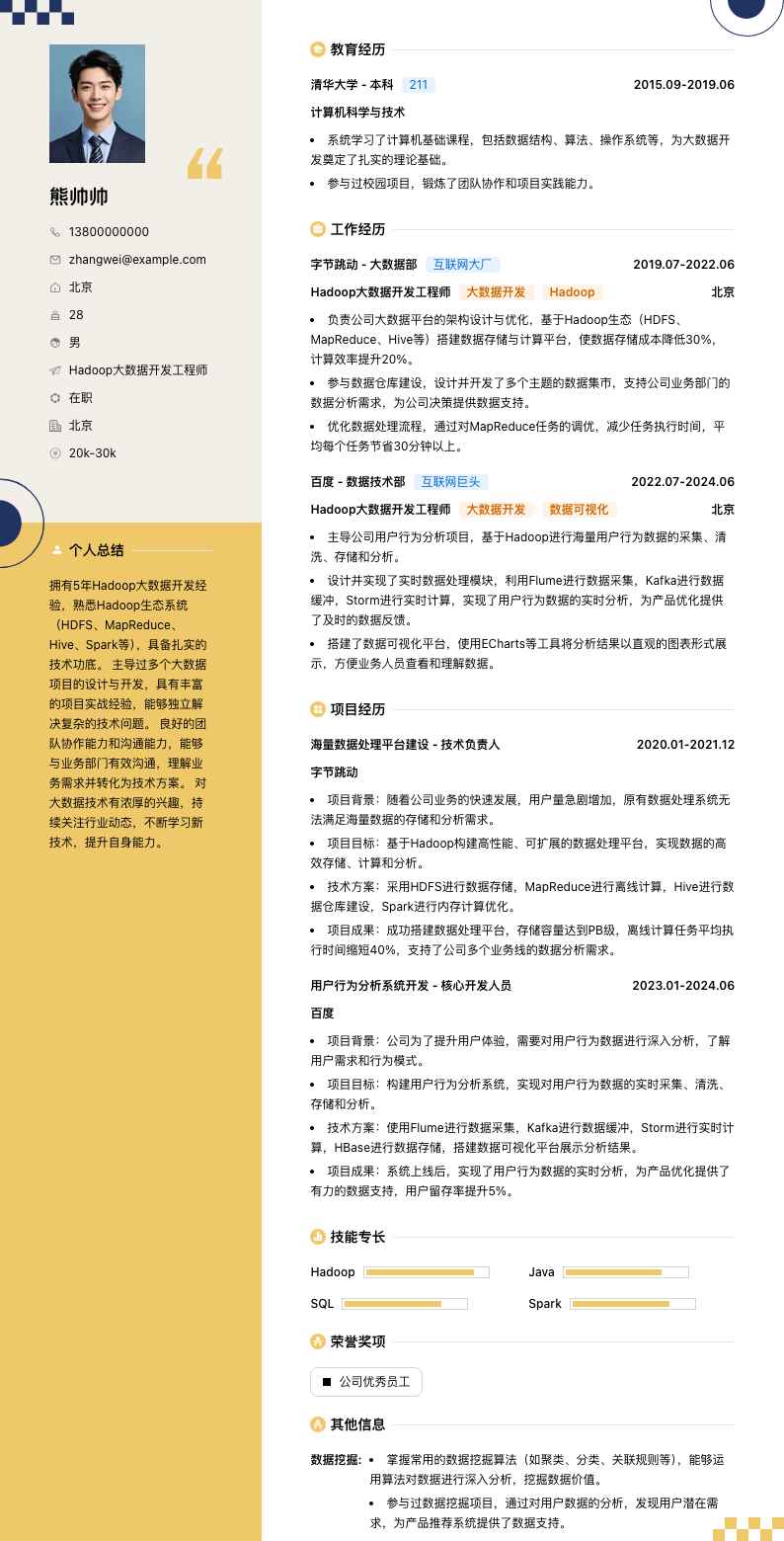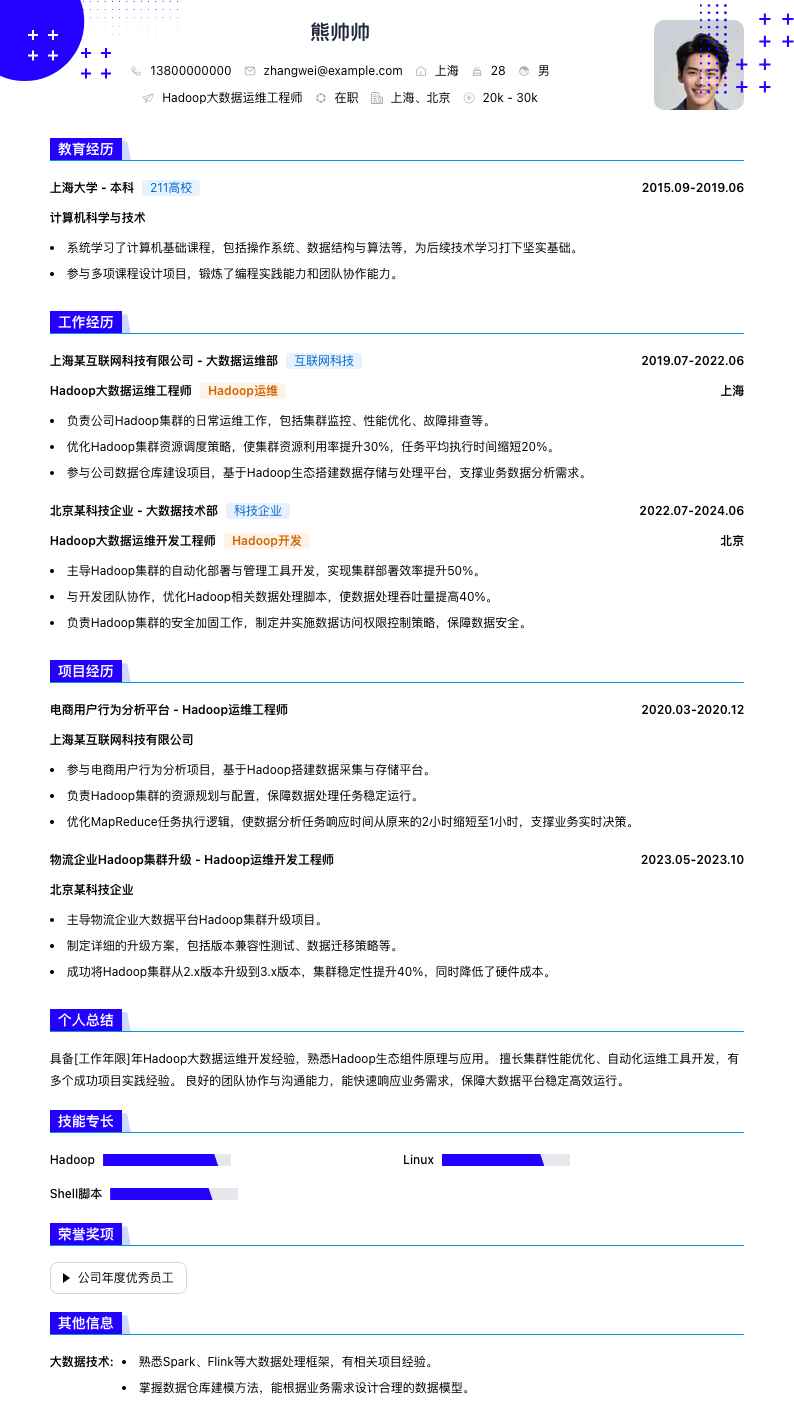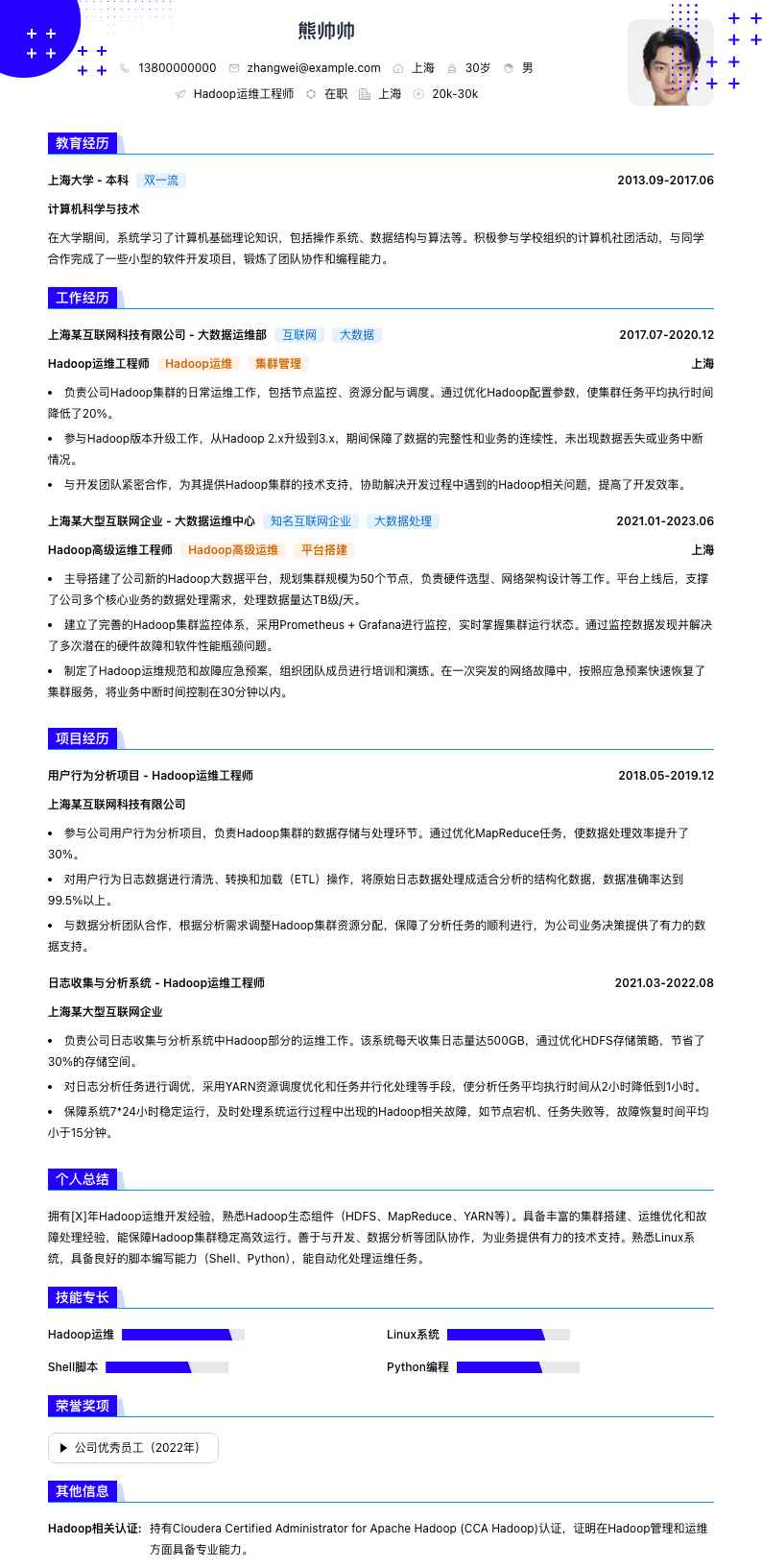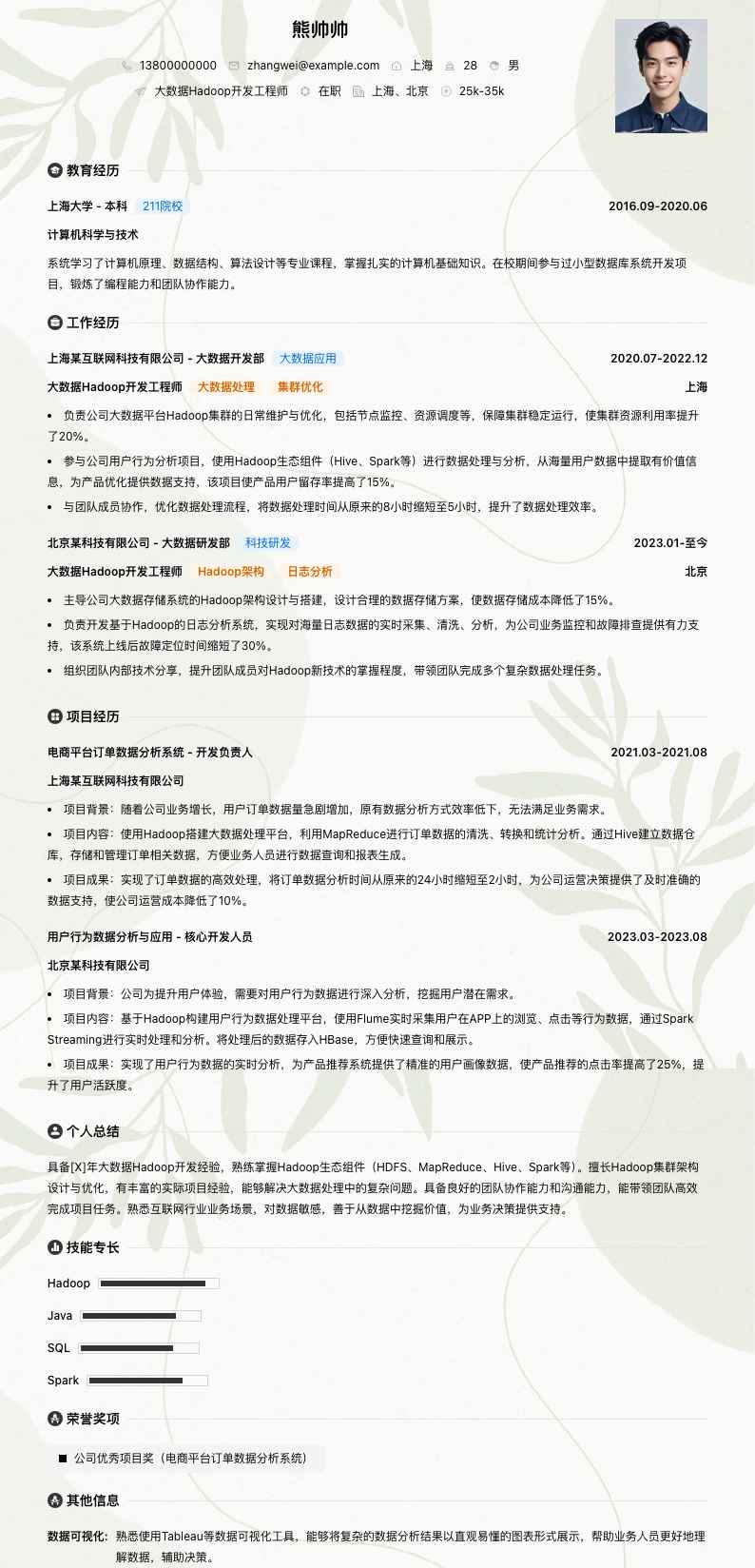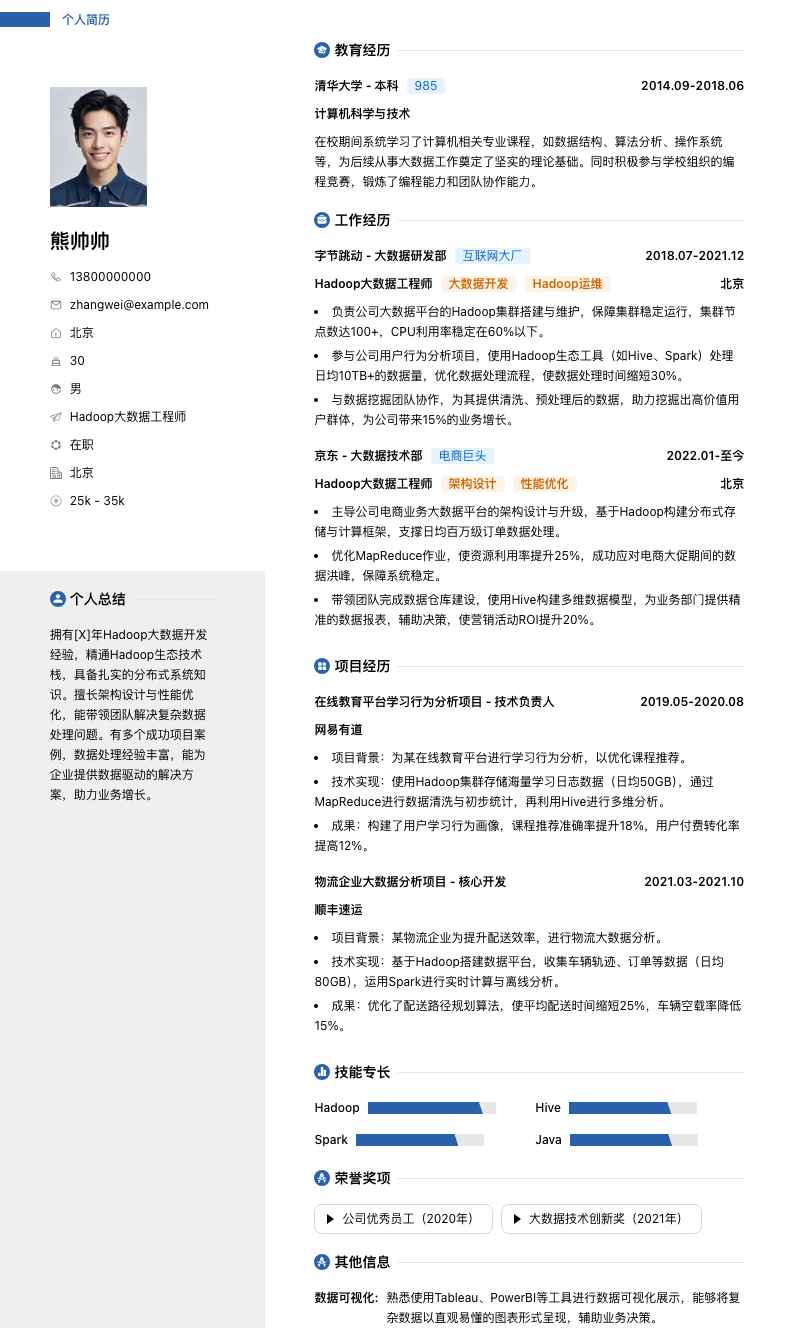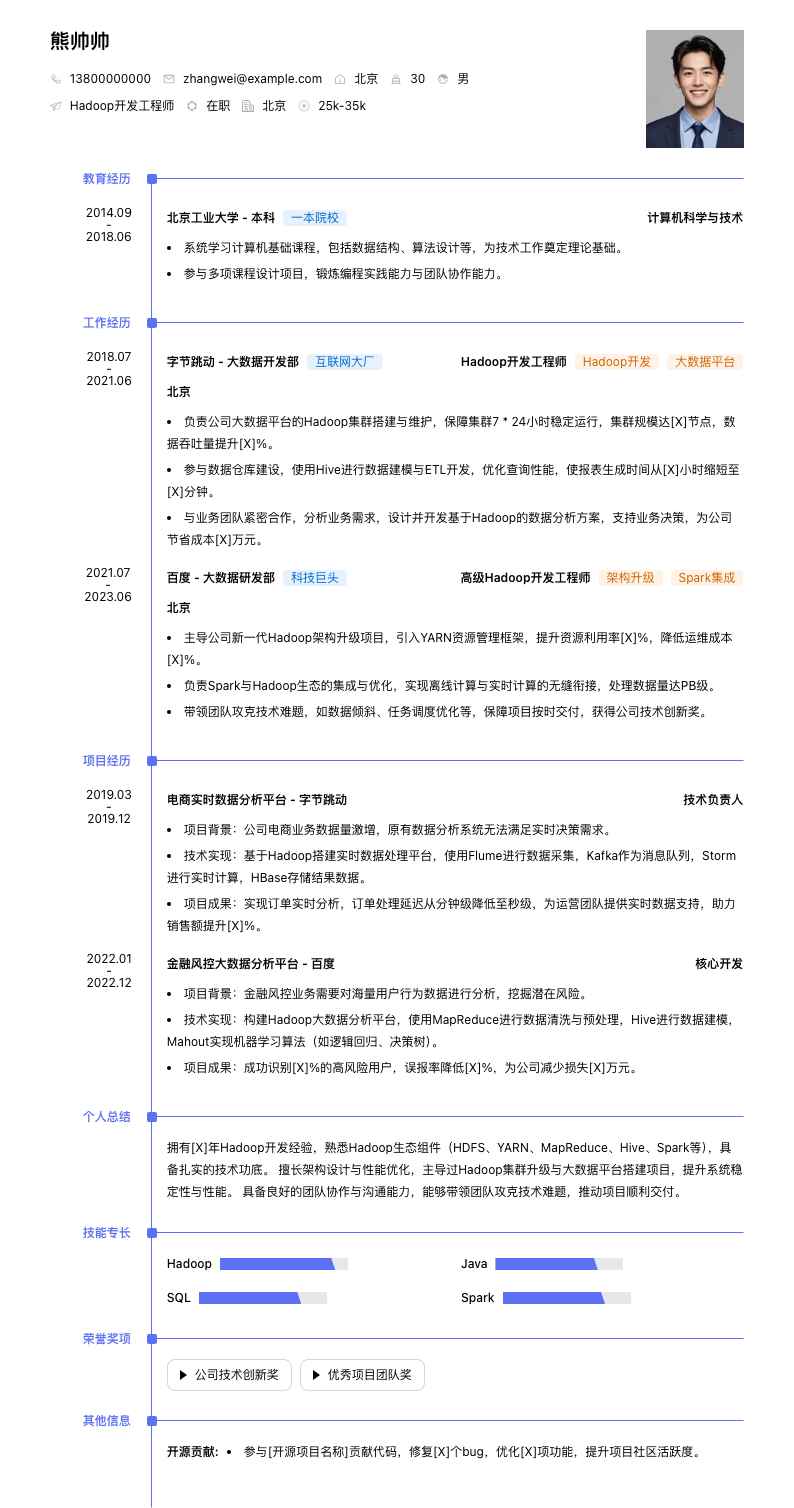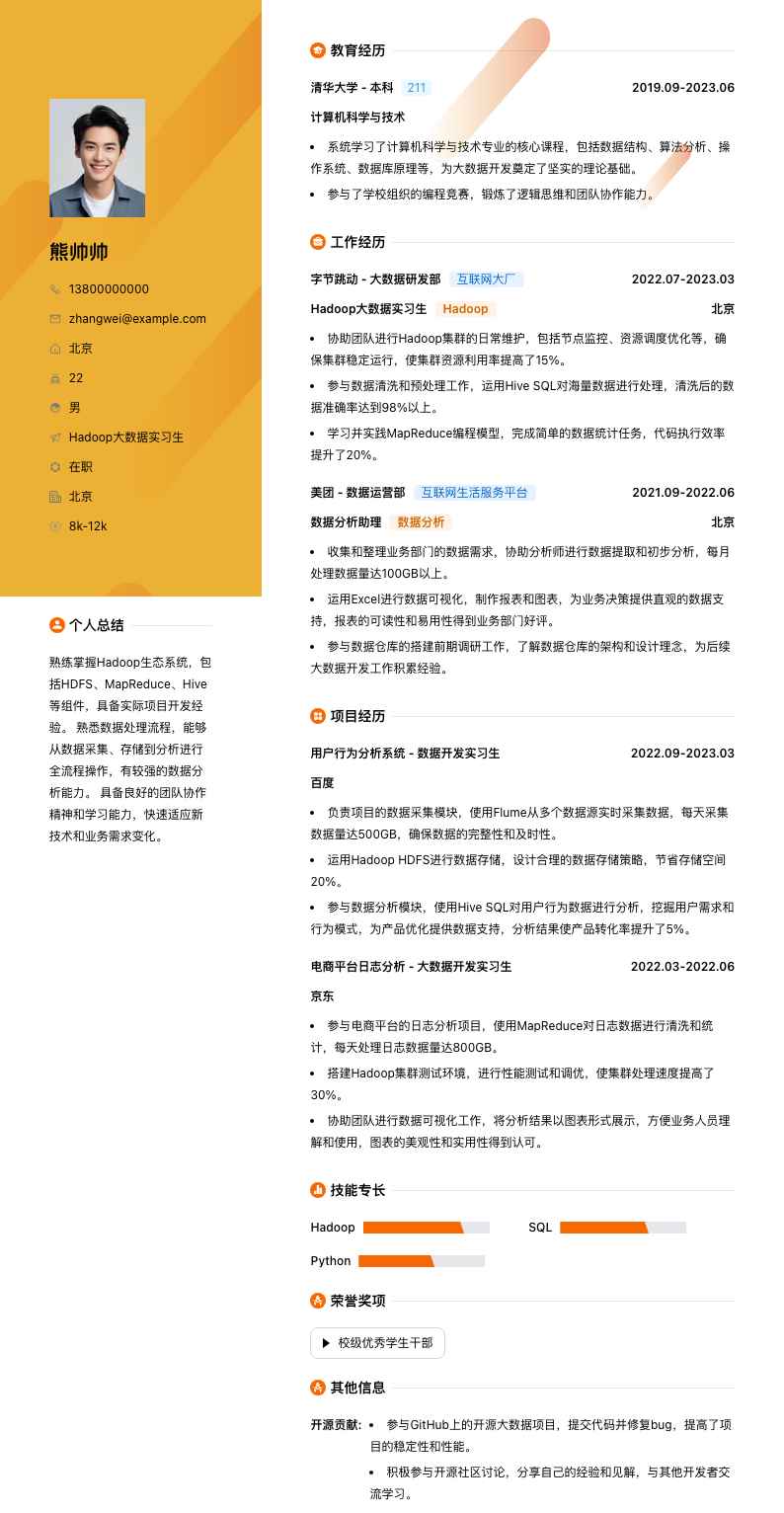Autonomous Driving Algorithm Engineer简历模板





熊猫简历自动驾驶算法工程师简历模板,支持自定义板块、自定义颜色、AI润色、技能条、荣誉墙、一键更换模板,专业AI辅助一键优化自动驾驶算法工程师简历内容,仅需5分钟即可拥有一份精美的自动驾驶算法工程师简历模板,助力你获得「高薪职位」。
云端操作,实时保存
排版格式完整
打印效果最好
操作简单、制作快速,AI 智能优化
Peter Xiong
Education Experience
Shanghai Jiao Tong University
985211Double First-Class
Computer Science and Technology
Master
2014.092017.06
- During the school period, systematically studied professional courses such as computer algorithms, machine learning, and deep learning. GPA 3.8 (full score 4.0), ranking in the top 5% of the major.
- Participated in the tutor's scientific research project, had preliminary research in the field of image recognition, and published 1 academic paper, which was included in EI.
- Won school-level scholarships many times, actively participated in computer-related competitions, such as the ACM International Collegiate Programming Contest, which exercised algorithmic thinking and teamwork ability.
Work Experience
NIO
New Energy VehiclesIntelligent Driving
Autonomous Driving R & D Department
Autonomous Driving Algorithm Engineer
Autonomous DrivingAlgorithm R & DDeep Learning
2019.072023.06
Shanghai
- Responsible for the research and development and optimization of autonomous driving perception algorithms. Led the application of target detection algorithms based on deep learning in autonomous driving scenarios, increasing detection accuracy by 15% and detection speed by 20%.
- Led a 3-person algorithm team to complete the development of multi-sensor fusion algorithms, realizing efficient fusion of camera and radar data, improving the accuracy and robustness of target recognition. This algorithm has been applied to the company's mass-produced models.
- Closely cooperated with the hardware team for algorithm hardware adaptation and optimization, reducing the computing resource consumption of the algorithm on the embedded platform by 30%, ensuring the real-time operation of the algorithm in actual vehicles.
- Participated in the testing and verification work of the autonomous driving system, designed and executed test cases in various complex scenarios. The cumulative test mileage exceeded 100,000 kilometers, and more than 50 problems of the algorithm in actual application were discovered and solved.
Baidu
Internet GiantArtificial Intelligence
Autonomous Driving Division
Algorithm Engineer
Autonomous DrivingPositioning AlgorithmSLAM
2017.072019.06
Beijing
- Mainly engaged in the research and development of autonomous driving positioning algorithms. Based on SLAM technology, realized high-precision positioning of vehicles in complex urban environments, and the positioning accuracy reached centimeter-level.
- Optimized the fusion algorithm of the inertial navigation system and GPS, improved the stability and reliability of the positioning system in GPS signal loss scenarios, keeping the positioning error within 1 meter within 30 seconds of GPS lock loss.
- Participated in the construction of the autonomous driving simulation platform, developed the simulation test module of the positioning algorithm. By simulating the positioning needs in different scenarios, the performance of the algorithm was verified in advance, shortening the algorithm development cycle by 20%.
- Cooperated with the map team to combine high-precision map data with the positioning algorithm to realize the map-assisted positioning function and improve the overall performance of the autonomous driving system.
Project Experience
Research and Development of Target Detection Algorithm for Autonomous Driving on Urban Roads
Algorithm Engineer
NIO
2020.012021.12
- Project Background: To solve the problem of target detection in complex traffic scenarios on urban roads and improve the safety of autonomous driving vehicles.
- Project Content: As a core algorithm engineer, responsible for the development of target detection algorithms based on deep learning. Adopted the YOLOv5 algorithm framework and optimized it for autonomous driving scenarios, increasing the detection ability of multiple types of targets such as traffic signs, pedestrians, and vehicles. Through data augmentation, model pruning and other technologies, while ensuring detection accuracy, the model parameter quantity was reduced by 40%, meeting the computing resource limitations of the embedded platform.
- Project Results: In actual road testing, the target detection accuracy of this algorithm reached more than 95%, and the real-time processing frame rate reached 30fps. It has been successfully applied to the company's autonomous driving test vehicles and passed a number of strict functional safety tests.
Research on Autonomous Driving Positioning Algorithm in GPS Signal-Free Areas
Algorithm Engineer
Baidu
2017.072019.06
- Project Background: To achieve high-precision positioning of autonomous driving vehicles in GPS signal-free areas (such as underground parking lots, tunnels).
- Project Content: Led the development of positioning algorithms based on visual inertial odometry (VIO). Combined visual feature extraction (ORB-SLAM3) with inertial measurement unit (IMU) data fusion to achieve real-time estimation of vehicle pose. Improved the accuracy and robustness of positioning by optimizing the back-end nonlinear optimization algorithm (g2o). Built a simulation test platform to simulate different environmental conditions such as lighting and texture to comprehensively test the algorithm.
- Project Results: In actual scenario testing, the positioning accuracy of the algorithm reached centimeter-level. In GPS signal-free environments, the continuous positioning time exceeded 10 minutes, meeting the positioning needs of autonomous driving vehicles in specific areas. Related technologies have applied for 2 patents.
Personal Summary
- 8 years of experience in autonomous driving algorithm research and development. Proficient in core algorithms such as perception and positioning, with rich experience in actual project implementation.
- Have strong team leadership ability. Once led the team to complete the development and optimization of multiple key algorithms.
- Familiar with the overall architecture and development process of autonomous driving systems. Can collaborate with multiple teams to promote project progress.
- Continuously pay attention to cutting-edge industry technologies, such as the application of large models in autonomous driving, and constantly learn and try technological innovation.
Honors and Awards
2022 Excellent Employee of NIO
2018 Baidu Technology Innovation Award
Other Information
Use of Autonomous Driving Simulation Platform:
- Proficient in using autonomous driving simulation platforms such as CARLA and PreScan. Can use the platform to build various complex traffic scenarios for algorithm simulation testing and verification.
- Through the simulation platform, potential problems of the algorithm in actual scenarios are discovered in advance, reducing the cost and risk of real vehicle testing.
- Can customize and develop plugins and interfaces of the simulation platform according to algorithm requirements to expand platform functions.

